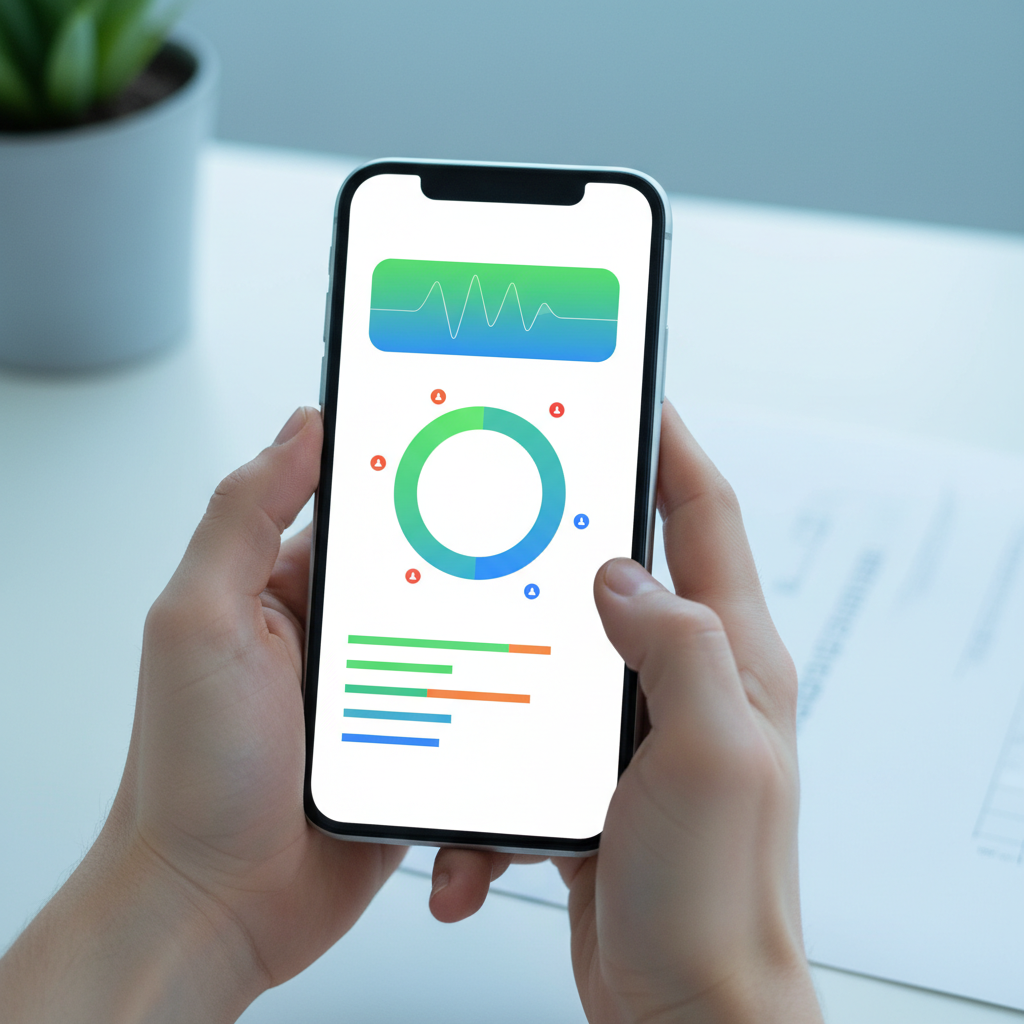
Table of Contents
Introduction
That sinking feeling when you check your account and see an overdraft fee? Yeah, we’ve all been there. Maybe it was that automatic bill payment you forgot about, or perhaps you miscalculated after that unexpected car repair. Whatever the reason, overdraft fees have a way of showing up at the worst possible moment—and they sting.
Here’s the deal: overdraft fees happen when you spend more than what’s sitting in your checking account. Banks charge these fees to cover their risk when they front you money you don’t actually have. Sounds reasonable in theory, right? But in practice, it often feels like getting kicked when you’re already down. One small mistake can snowball fast—especially when fees start stacking up. The good news? You can absolutely learn to avoid these money traps. And honestly, once you understand how they work and what tools are available to help you stay on top of your balance, you’ll wonder why you didn’t tackle this sooner. For anyone looking to build stronger money habits overall, checking out how to use credit cards responsibly makes perfect sense alongside managing your bank accounts.
Technology has completely changed the game when it comes to managing your money. Those mobile banking apps on your phone? They’re actually pretty amazing. Real-time balance updates, spending alerts, low balance warnings—it’s like having a financial assistant in your pocket. I can’t tell you how many overdrafts these simple notifications have saved me over the years. Online banking portals give you that same power when you’re at your computer, letting you check your transaction history and available funds whenever you need to. The key is actually using these tools consistently (not just downloading the app and forgetting about it). Building this habit creates a safety buffer that can save you serious money. And while we’re talking about building financial safety nets, learning about tips for increasing your credit score can open up better credit options that complement smart banking habits.
Now let’s talk strategy. Setting up overdraft protection isn’t just smart—it’s essential. Think of it as insurance for your checking account. You can link your savings account so if you accidentally overspend, the money automatically transfers instead of triggering a fee. Some banks even let you opt out of overdraft services entirely for debit card purchases, which means your card simply gets declined instead of charging you $35 for that $4 coffee. (Trust me, that’s a much better scenario.) The real power move? Building an emergency fund so you have breathing room in the first place. If you’re not sure where to start with that, the guide on how to build an emergency fund breaks it down step by step.
What You’ll Learn in This Guide
This guide will give you everything you need to kick overdraft fees to the curb for good. Here’s exactly what we’ll cover:
- Understanding Overdraft Fees: We’ll break down exactly what these fees are, why banks love charging them, and the sneaky ways they can catch you off guard. Once you know what triggers them, you can spot the danger zones before they cost you money.
- Account Monitoring Tools and Habits: Discover the best apps, alerts, and daily habits that keep you informed about your balance. These aren’t complicated—just smart ways to stay one step ahead of your spending.
- Strategies to Prevent Fees: Learn practical moves like maintaining buffer balances, setting up overdraft protection that actually works, and linking accounts strategically. These tactics will save you real money and plenty of stress.
- Handling Overdraft Fees: Already got hit with a fee? Don’t panic. We’ll walk through exactly what to do, including how to ask your bank for a waiver (yes, this actually works sometimes) and how to prevent it from happening again.
We’ll also touch on related money topics that tie into avoiding overdrafts. For instance, understanding the difference between checking and savings accounts helps you organize your money more effectively. And if you use credit cards, knowing how to avoid credit card interest charges keeps your overall financial picture healthier.
What’s coming up will change how you think about managing your checking account. We’re talking real-world tips you can start using today, expert insights that actually make sense, and proven strategies that work for regular people (not just financial advisors). Once you finish reading, you’ll have the confidence to handle your daily money management without constantly worrying about surprise fees.
So stick around as we dig into what causes overdraft fees, which monitoring tools actually help, and the best ways to prevent these charges from ever showing up again. With the right knowledge and some smart habits, you really can eliminate overdraft fees from your life completely.

Nobody likes surprise fees—especially overdraft fees that seem to pop up at the worst possible times. You know the drill: you think you have enough money in your checking account, make a purchase, and boom—suddenly you’re hit with a $35 fee (or sometimes more). The good news? These fees are totally preventable once you understand how they work and develop some smart habits around managing your money.
Understanding Overdraft Fees and Their Common Causes
Here’s what’s happening when you get slapped with an overdraft fee: you’ve spent more money than what’s sitting in your checking account, and your bank decided to cover the difference—for a price. Sometimes it’s your fault (hello, impulse purchase), but other times it feels completely unfair. Maybe your paycheck was delayed, or your bank processed payments in a weird order that screwed up your calculations.
Different banks handle this stuff differently, which can be frustrating when you’re trying to figure out the rules. Some banks offer overdraft protection (which can be a lifesaver), while others will just decline your card to save you from fees. The trick is knowing your bank’s specific policies so you can work with them instead of against them. And here’s something interesting—understanding how checking and savings accounts differ can actually help you set up a better system for avoiding these fees in the first place. Plus, if you’re working on improving your credit score, good banking habits definitely play a role in your overall financial health.
Common Causes of Overdrafts
Let’s be real about what actually causes these annoying fees. Most of the time, it’s one of these culprits:
- Unplanned Purchases: That “I’ll just buy this one thing” moment when you’re not totally sure about your balance. We’ve all been there. The key is keeping some wiggle room in your budget for life’s little surprises.
- Automatic Payments: Your Netflix subscription, gym membership, or car payment hits your account when you’re running low on funds. These scheduled payments don’t care about your cash flow situation.
- Bank Processing Delays: Sometimes banks process transactions in an order that makes no sense to normal humans. A big payment might go through before smaller ones, even if you made the smaller purchases first. It’s maddening, but it happens.
- Pending Transactions: You see money in your account, but some of it is actually tied up in pending transactions that haven’t cleared yet. This phantom money can trick you into thinking you have more available than you actually do.
Once you recognize these patterns, you can start building defenses against them. Think of it like learning to drive—once you know where the potholes are, you can steer around them.
Now that you know why overdrafts happen, let’s talk about the practical stuff you can do to avoid them. Because knowledge is great, but action is what actually keeps money in your pocket.
Effective Monitoring Tools and Practical Strategies to Avoid Overdraft Fees
Your smartphone is probably your best friend when it comes to avoiding overdraft fees. Most banking apps these days are pretty sophisticated—they’ll send you alerts when your balance drops below a certain amount, show you pending transactions, and even let you transfer money between accounts instantly. Set up those notifications! A quick ping on your phone beats a $35 surprise any day.
But apps aren’t your only option. Many banks offer overdraft protection, which basically means they’ll automatically move money from your savings account or a line of credit to cover shortfalls. It’s like having a financial safety net that catches you before you fall. Some people prefer to opt out of overdraft services entirely—meaning their cards get declined instead of triggering fees. It’s embarrassing in the moment, sure, but way less expensive than paying penalties. And if you’re getting serious about managing money responsibly, check out these strategies for using credit cards responsibly—they can actually complement your checking account management when used right.
Key Practices for Overdraft Fee Prevention
Ready for some actionable advice? These strategies actually work:
- Keep a Buffer Balance in Your Account: Always pretend you have $100 (or whatever amount works for you) less than what’s actually there. This fake buffer saves you from those small unexpected expenses that would otherwise trigger fees.
- Set Up Overdraft Protection Plans: Link your accounts so money automatically transfers when you’re running low. It’s not free, but transfer fees are usually way cheaper than overdraft penalties.
- Link Savings Accounts for Overdraft Coverage: This is overdraft protection’s cousin—your bank automatically pulls from savings to cover checking account shortfalls. Just make sure you actually have money in savings first.
- Opt Out of Overdraft Services if Preferred: Tell your bank you’d rather have transactions declined than pay fees. Yes, it’s awkward when your card gets rejected, but it forces you to stay within your means.
The bottom line? Avoiding overdraft fees isn’t rocket science, but it does require some attention and planning. Set up the right alerts, understand your bank’s policies, and always keep a little cushion in your account. Your future self (and your wallet) will thank you for taking these steps seriously.

Let’s be real—overdraft fees are like those surprise speed bumps that hit your wallet when you least expect them. But here’s the good news: once you understand why they happen, you’re already halfway to beating them. These fees pop up when you spend more than what’s sitting in your checking account. Maybe it’s an automatic payment you forgot about, an unexpected expense, or just one of those banking timing quirks that catches you off guard. The key? Knowing your triggers so you can see them coming.
Think of monitoring your account balance like checking your gas gauge—ignore it at your own risk. Your phone is your best friend here. Those mobile banking apps? They’re game-changers. Set up notifications that ping you when your balance gets low. Make it a habit to peek at your account before making purchases (yes, even that morning coffee). It sounds simple because it is. But simple doesn’t mean easy—it takes building the routine. Once you do, though? Banking becomes way less stressful and way more empowering.
Now, let’s talk strategy. Keep a little cushion in your account—think of it as your financial airbag. Even $50 can save you from a $35 overdraft fee. You can also link your savings account for overdraft protection (just check if your bank charges for this service). Here’s another option: opt out of overdraft coverage for your debit card completely. Sure, your card might get declined sometimes, but that’s way better than paying fees. The bottom line? These strategies put you back in the driver’s seat of your finances.
Ready to level up your financial game even more? Start by learning how to build an emergency fund—because having that financial breathing room changes everything when life throws curveballs. While you’re at it, work on increasing your credit score to unlock better banking options and lower fees across the board. And if you’re using credit cards, make sure you know how to use them responsibly—they can be powerful tools when handled right. Want to get back to basics? Understanding exactly what a checking account is and how it works can sharpen your money management skills.
Here’s what it all comes down to: you’ve got the tools to kick overdraft fees to the curb for good. It’s not just about avoiding those annoying charges (though that’s nice). It’s about taking control of your money and building confidence in your financial decisions. Stay consistent with these habits, keep learning, and watch how much more peaceful your relationship with money becomes.
Frequently Asked Questions
-
What is an overdraft fee?
- An overdraft fee is a charge your bank imposes when you spend more money than your account balance, covering the cost of the bank fronting the money.
-
How can I avoid overdraft fees?
- You can avoid overdraft fees by regularly monitoring your account balance, setting up alerts, maintaining a buffer, and using overdraft protection or opting out of overdraft services.
-
Can I get a refund on an overdraft fee?
- Sometimes banks may waive overdraft fees if you request a fee reversal and have a good history with the bank, but this depends on the bank’s policies.
-
Do overdraft protection services cost money?
- Some banks charge fees for overdraft protection services, so it’s important to check your bank’s specific terms before enrolling.
